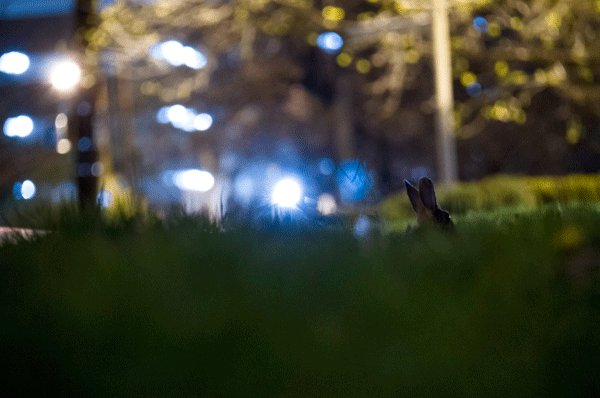
Every year, like clockwork, we hear about people whose cars are disabled by rabbits and other varmints near Denver International Airport. The media loves it, the airport probably hates it and all you drivers are left to wonder what will become of your ride.
We've got the best answers we could find – and a $27 option to avoid the furry scourge of the plains.
The issue:
There was, for example, the pilot who came home last year to a $428 repair bill for his Volkswagen, its wiring torn to shreds. In 2013, rabbits were "wreaking havoc" at DIA. The Los Angeles Times said the airport lots were "under siege."
One independent lot, USAirport Parking reportedly spent $52,000 on an underground fence to keep hares away from its cars, along with perches for birds of prey. (The airport discourages anything that brings raptors near planes.) The U.S. Department of Agriculture remove up to 100 lucky-foots per month, LAT reported.
Meanwhile, DIA spokesperson Heath Montgomery told me in an email last year that it's "simply not a big problem." Out of 3.7 million parking transactions in 2014, the airport received five official rabbit-related complaints, he said. It was just two last year, and the city has not paid out any money to people whose cars were damaged.

But what do varmints have against my car?
"There’s been a lot of theories out there," said Kendra Cross, district supervisor for USDA. "I just think, honestly, that that’s what rabbits do ... They have to gnaw their front incisors to keep them down, or they’ll continually grow."
And it's not specific to DIA, of course. Jackrabbits are "plains dwellers" in both urban and suburban environments. They are not attracted by the occult offerings of DIA, but instead seem to live anywhere they can find low-lying shrubs and bushes.
Rodents may also like cars because their engine blocks provide some warm shelter.
And then there's the most legally controversial theory of the moment: Carmakers may have made your vehicle too tasty.
A class-action lawsuit filed this year against Honda alleges that the use of soy-based materials in wiring materials attracts rodents and other rabbits. (One of the plaintiffs drove his malfunctioning car to the dealership, where mechanics reportedly found a live rabbit inside the vehicle after several days.) Toyota faces a similar suit
Honda and other manufacturers appear to deny most or all rodent-related reimbursement requests. It's unclear whether rodents really do like the new materials any better; complaints about this kind of thing date back for decades.
So, here's what you can do:
First, I'd advise having your mechanic check for rodent damage. That's how I recently learned that somebody had been chewing on my air filter.
Wildlife expert Dr. Kieran Lindsey suggested placing a garden gnome, or any other object with eyes, under your car. I'm not sure DIA will appreciate that.
You also might minimize your exposure by keeping food away from the vehicle. DO NOT spray poison on your car. It's not good to poison the thing you spend a lot of time in.
Or you can try to make that wiring less attractive. Lindsey told CarTalk listeners they could spray capsaicin on the vehicle. (You can buy it pre-bottled.)
There's also this $27 roll of capsaicin-laced tape from Honda. Reviews are mixed ("THE RACCOONS ATE WRITE THRU IT") but largely positive.
Lastly, you could just buy some fox pee on Amazon Prime. Here's one with good reviews – and free shipping.











